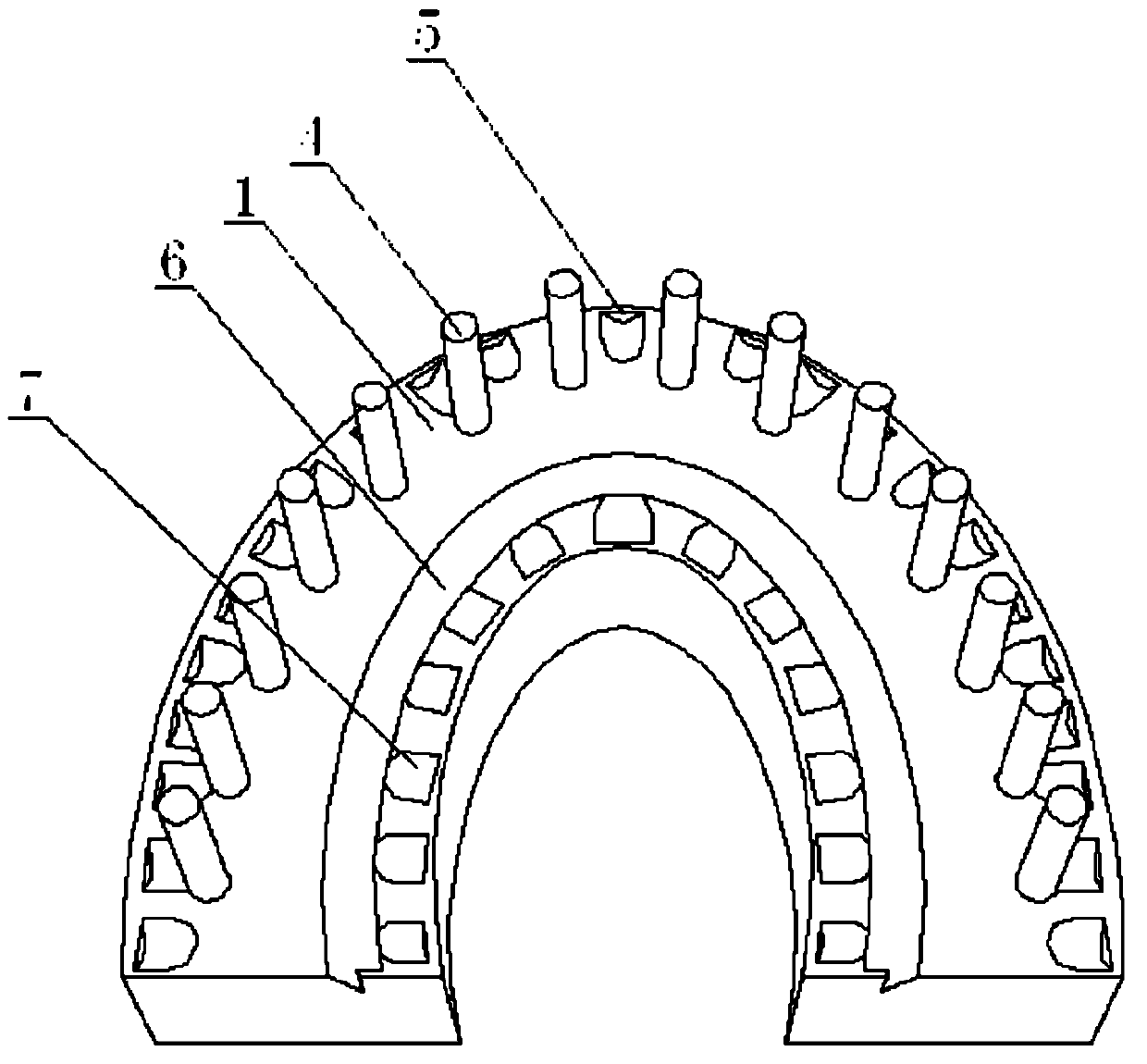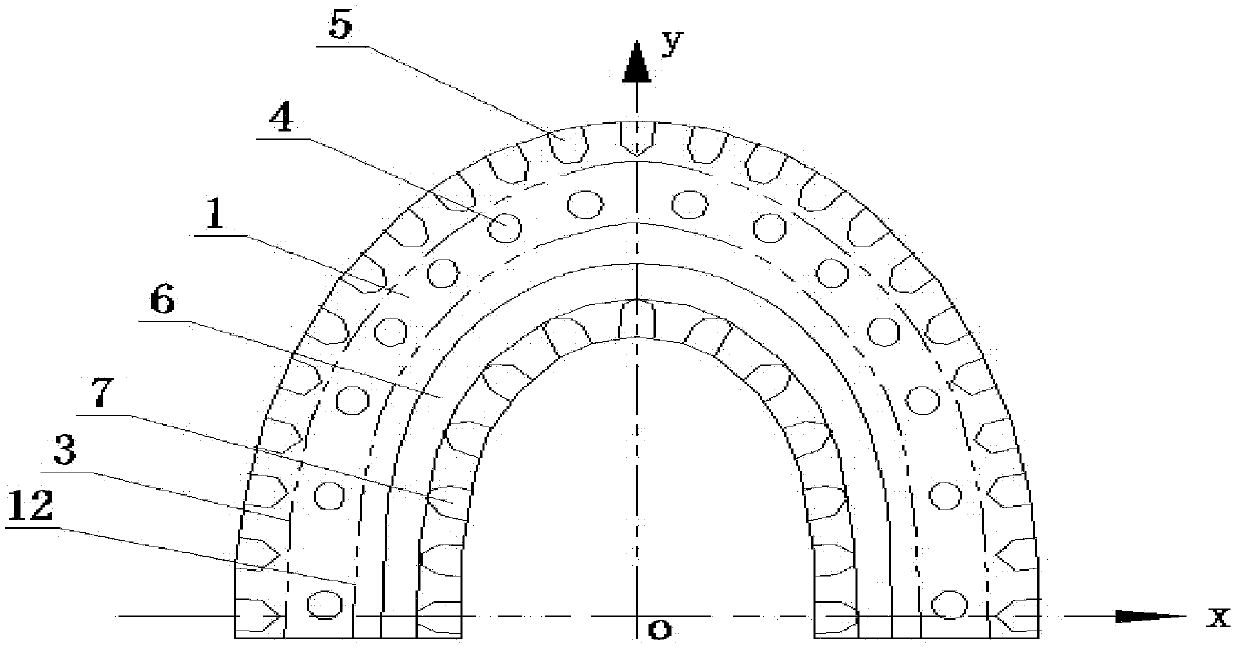Die sole
A base and prototype technology, applied in the field of medical devices, can solve the problems of poor operator level, influence on quality, and unstable quality, and achieve the effects of strong operability and practicability, saving production costs, and improving physical properties
- Summary
- Abstract
- Description
- Claims
- Application Information
AI Technical Summary
Problems solved by technology
Method used
Image
Examples
Embodiment Construction
[0023] The present invention will be described in further detail below in conjunction with the accompanying drawings and specific embodiments.
[0024] figure 1 is a schematic diagram of the structure of the substrate, figure 2 is a schematic diagram of the structure of the base, image 3 It is a schematic diagram of the structure of the substrate in the coordinate system, as shown in the figure. The die base includes a substrate 1 made of organic polymers and a base 2 made of organic polymers. Substrate 1 is a horseshoe-shaped structure, and the outer side of substrate 1 is given by Equation 1: The curve 3 drawn above the x-axis is formed by expanding outward by 4-6 mm. The inner edge of substrate 1 is given by Equation 2: The curve 12 drawn above the x-axis is formed by contracting inwardly by 10-12 mm. The base of the substrate 1 is formed by extending 4-6 mm from the x-axis to the negative direction of the y-axis. Between the curve 3 above the x-axis in Equation ...
PUM
 Login to View More
Login to View More Abstract
Description
Claims
Application Information
 Login to View More
Login to View More - R&D Engineer
- R&D Manager
- IP Professional
- Industry Leading Data Capabilities
- Powerful AI technology
- Patent DNA Extraction
Browse by: Latest US Patents, China's latest patents, Technical Efficacy Thesaurus, Application Domain, Technology Topic, Popular Technical Reports.
© 2024 PatSnap. All rights reserved.Legal|Privacy policy|Modern Slavery Act Transparency Statement|Sitemap|About US| Contact US: help@patsnap.com










